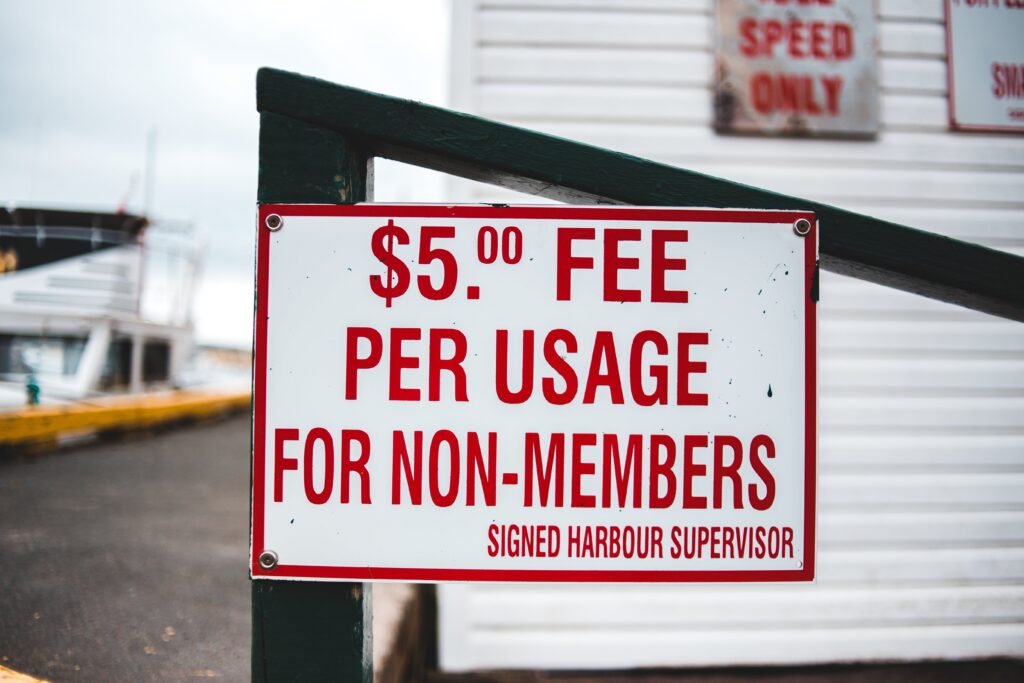Explore proactive budgeting and investment strategies on how to protect from inflation and to maintain financial stability in times of inflation. Navigate budgeting challenges with confidence.
You have probably been hearing about an uptick in inflation on the news. You may have also noticed that your groceries and other bills are costing more. Surging costs can be a source of stress. But with a few changes to your financial plan, you can lessen the impact on your household budget.
What is inflation?
Simply put, inflation is the gradual rise in prices. During an inflationary period, the cost of everything from commodities like food and housing to services like health care might rise. Over time, some degree of inflation is typical. Because of inflation, an item that cost $1.00 in the 1920s would cost around $18.00 now.
When prices rise, buying power (or the worth of a currency) falls. When inflation “surges,” each unit of money today is worth less than it was only a few months ago. Even if you make no changes to your lifestyle or routine purchases, your spending will increase.
Why is inflation a problem?
In order to preserve profit margins, businesses must raise their pricing of goods and services to cover rising costs. Consumers, confronted with rising expenses for products and energy, seek more pay to maintain their standard of living. This wage-price spiral fuels higher inflation, and breaking the loop is extremely difficult. When pay increases do not keep pace with inflation, consumers spend less. The primary reasons for the downgrading include a reduction in the generousness of the Energy Price Guarantee, more taxes on high-income earners, and indicators that the housing market is weakening quicker than many expected.
How to protect investments from inflation
When it comes to investing, financial advisors have always considered’real’ returns in addition to your objectives and risk tolerance. These are computed by subtracting the inflation rate from the rate of return on investment (the nominal return). If an investment return is 8% and inflation is 6%, the real return is +2% (8% – 6%), but when inflation is 2%, the actual rate of return is 6% – three times as much. Real returns can be negative, just as nominal returns.
When should I invest?
Many individuals feel that understanding when to purchase and sell is the key to profitable investment. The fact is that no one can predict whether investment markets will increase or decline. Attempting to timing the stock markets is not only difficult, but it is also rarely effective. For those who can afford it, leaving monies invested for the medium to long term delivers the best results.
Our belief is that no one can accurately foresee the peaks and troughs of financial markets, and it has always been extremely difficult to determine when the best (peaks) and worst (troughs) times are. Stock market timing is highly difficult, thus we feel it is best avoided.
Because volatility is a component of investing, we always take the time to understand how much risk each customer is willing to face before investing. We also believe in the value of asset diversification in helping to moderate some of the market’s extremes. Using a diversified multi-asset approach implies that some assets, such as bonds, might perform better in different market circumstances since they are more defensive assets, whereas equities perform better during periods of expansion.
How To Protect From Inflation
Rising price periods may be unpredictable, and there is no way to anticipate how high inflation will rise or how long it will remain.
You may take certain precautions to shield yourself from the worst effects of inflation. You might begin by reviewing your short- and long-term financial plans to determine what changes you may need to make.
Higher inflation may necessitate postponing a home repair project or spending your holiday at home rather than traveling. Or it might necessitate something more drastic, such as taking on a second job or creating a side business.
Another approach to protect yourself against inflation is to balance your savings and debt payments. When prices rise, money in a savings account may not go as far, especially if the interest rate on deposits is low. Similarly, you may opt to temporarily halt incurring new debt.
Having a budget to stick to can help your inflation-proofing strategy succeed. Here are eight crucial items to consider as you work on creating an inflationary budget.
1. Streamline Your Mortgage Costs
If you own a house, your mortgage may be one of your most significant budgeting expenses. You may be able to save money by refinancing your home.
So, how can you know if refinancing is a good idea? First, examine what rates you might be able to get depending on your credit score and income. After that, compare it to your existing interest rate. You may run the numbers with the aid of a mortgage refinancing calculator.
Next, consider how long you want to stay in the home and how much you expect to pay in closing fees for a mortgage refinance loan. If you intend to stay in the house for at least long enough to reach the break-even point—that is, to return your closing expenses in interest savings—this might be an option.
If you are unable to refinance your mortgage, another option for saving is to shop around for a better offer on homeowners insurance. Finding a less priced coverage may allow you to reduce your budget and save money.
2. Reduce Rates on Other Debts
You may be budgeting for debt payments for credit cards, school loans, or other lines of credit in addition to a mortgage. Paying off debt, or making it less expensive, might assist when increasing costs take effect.
If you have credit card debt, check with your bank for 0% APR balance transfer offers or low rate personal loans. A 0% balance transfer allows you to pay off your debts over time and interest-free. Meanwhile, personal loans might help you combine high-interest bills at a reduced fixed rate.
Refinancing student loans may enable you to obtain a reduced interest rate, making monthly payments more bearable. However, keep in mind that converting federal loans into private loans entails giving up some perks and safeguards.
3. Complete an Energy Audit
Energy prices are a significant driver of inflation. When the cost of various energy sources, such as coal, natural gas, heating oil, and electricity, rises, so does the cost of producing and delivering consumer products. The higher prices are passed on to customers by the corporations that manufacture or transport such items.

Budgeting for increased prices entails taking into account how much energy you use at home and finding strategies to cut expenditures as much as feasible. Some easy ways to save energy at home or on the road, according to the US Department of Energy, are as follows:
- Sealing air leaks around windows and doors
- Having your HVAC system cleaned and serviced in spring and fall
- Using energy-efficient lightbulbs
- Setting your thermostat lower in winter and higher in summer
- Unplugging electronics when not in use
- Keeping your tires properly inflated
- Carpooling to share fuel costs
- Consolidating trips in the car and driving the speed limit
These are just a few ideas for lowering your energy costs and putting money back into your budget.
If you are dealing with rising energy costs, you might look into the Low Income Home Energy Assistance Program. This program assists qualifying households in paying their heating and cooling expenses.
4. Save on Car Insurance
As previously said, switching homeowners insurance policies is one technique to save money while preparing for inflation and increased rates. However, you may want to reconsider your other insurance coverage.

Some examples of techniques to save money on automobile insurance include:
- Raising your deductible, which could lower your monthly premium
- Negotiating a safe driving discount
- Reducing coverage, if appropriate
- Comparing quotes and changing auto insurance companies for a better price
5. Eliminate Unnecessary Subscriptions and Fees
It’s probable that you’re wasting money on monthly subscription or streaming services. According to J.D. Power, the average household subscribes to 4.5 streaming services and spends $55 per month on them.

Although it may not appear to be much, $55 every month adds up to more than $600 per year. If you’re looking to decrease costs in the face of rising prices, canceling unwanted subscriptions is an excellent place to start.
If you don’t have time to search down all of your subscriptions, these personal finance applications can help. Mint and Truebill, for example, connect to your bank and credit card accounts to search for subscriptions you’re paying for and may assist you in canceling them if you decide you no longer need or want them. Some applications may even assist you in negotiating better prices on cable, internet, and mobile phone services to save money or minimize bank fees.
Switching banks is another option to save money on banking costs. Checking account fees can cost you up to $32 per month, or roughly $400 per year. So, when seeking to balance inflation, switching banks or opening a new checking account might be an excellent strategy to put money back to your budget.
6. Shop Smarter at the Grocery Store
Feeding your family is something you can’t avoid, so it’s critical to figure out how to budget effectively for food while costs are rising.
Here are some grocery budgeting techniques to help you save money:
- Swap out brand-name items for generic products as much as possible.
- Buy in bulk if it allows you to purchase items at a lower unit price.
- Incorporate more meatless meals into your family’s diet.
- Use grocery store weekly sales flyers to plan budget-friendly meals.
- Shop local farmers’ markets if that’s an option where you live.
- Incorporate more low-cost staple items into your meals, such as pasta or rice.
You may also cut your shopping costs by using money-saving apps. Ibotta, for example, allows users to receive cash back on food purchases made at partner businesses. This is a simple strategy to counteract inflation and increased grocery pricing.
7. Make Room in Your Budget for Investing
For some, periods of rising prices may appear to be the worst moment to invest. Why would you invest in the stock market when your monthly expenses are rising?
Here’s another way to look at it: Whether you’re investing for retirement or other goals, you must maintain consistent contributions regardless of what’s going on in your financial life. After all, beating inflation by maintaining and improving the buying power of your money over time is one of the primary reasons to invest in the first place.
However, if your budget is tight, consider lowering your payments in the short term. Just be sure to restore and potentially increase payments once the strain is relieved.
There are investments developed particularly to help you combat inflation. Take, for example, Series I savings bonds, which pay an annual interest rate of 9.6% until at least October 2022. I bonds are designed to pay you more when inflation rises.
If you invest in dividend-paying companies, you may be able to augment your income. A dividend is a portion of a company’s profits. Some public corporations gain from inflation because they can raise prices and make higher profits, which can be passed on to you in the form of lower pricing.
8. Increase Your Income if Possible
One of the most serious issues with rising costs and inflation is that wages do not keep pace. While the Great Resignation of 2021 caused some firms to raise worker compensation, pay rates in the United States had been mainly stable for decades.
Finding strategies to boost your income will help you get through and budget for periods of prolonged inflation. Among the possibilities for raising revenue are:
- Selling things you don’t need
- Negotiating a pay raise with your current employer
- Changing jobs for better pay
- Taking on a part-time or second job
- Starting a side hustle or side business
Bottom Line
Inflation may make household budgeting more difficult, and it can be distressing when growing costs appear to have no end in sight. Knowing how to plan for inflation begins with examining your fixed and discretionary expenditure to determine where you can cut back.
Then, seek for other methods to save, such as refinancing debt at a reduced interest rate, lowering your home energy bills, and switching insurance providers. Finding strategies to increase your revenue might also help you make up for any budgetary shortages caused by rising prices.
PIMCO Inflation Multi-Asset Fund
The PIMCO Inflation Multi-Asset Fund is a comprehensive real return asset allocation solution designed to hedge global inflation risks while targeting enhanced after-inflation return. The fund invests in a diversified mix of inflation-related asset classes, including real estate, infrastructure, commodities, and inflation-linked bonds. The fund’s investment strategy is driven by PIMCO’s Global Investment Committee and Asset Allocation Committee, which provide top-down macroeconomic views, and PIMCO’s Real Return team, which provides bottom-up relative value ideas. The PIMCO Inflation Multi-Asset Fund is a UCITS III fund and is available in a variety of share classes.
Frequently Asked Questions
Free Invoice Template for Excel: Streamline Your Billing Process
In the fast-paced world of business, efficiency and accuracy in billing are paramount. At SaveSaga,…
20+ Budget-Friendly Gift Ideas for Every Special Occasion
Unlock the secret to heartfelt gifting without breaking the bank. Explore our guide for creative,…
30+ Ways to Make $1000 Fast in 2024: Legal, Legit, and Lucrative
#MAKE MONEY Make $1000 fast Are you struggling to make ends meet? Do you need…
How to Create a Budget as a College Student, 13 best ways
In the whirlwind of college life, Budget as a College Students can be a daunting…
8 Proactive Strategies On How To Protect From Inflation For Financial Stability
Explore proactive budgeting and investment strategies on how to protect from inflation and to maintain…
Decoding Fixed And Variable Expenses: Achieving Financial Stability Through Smart Budgeting
Master the art of financial stability with our guide on budgeting. Explore the balance between…




